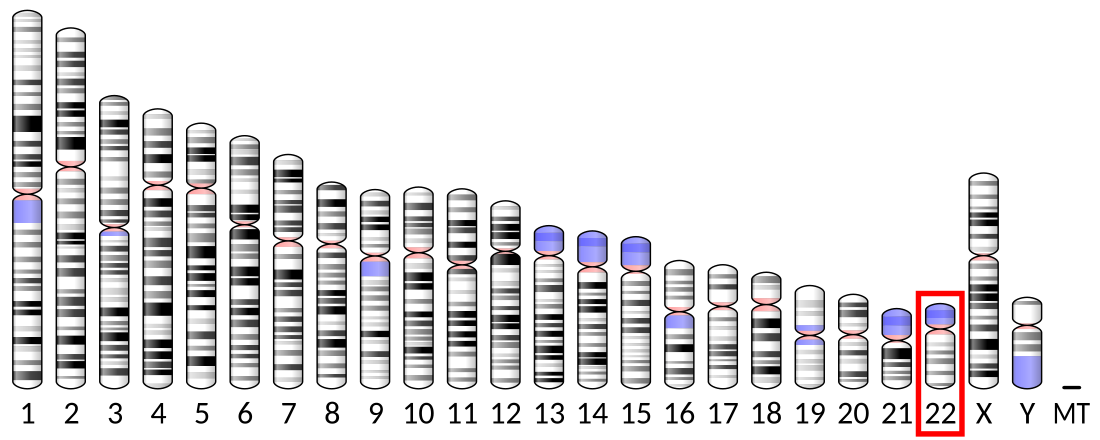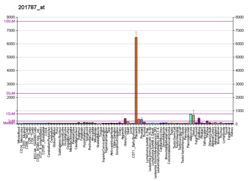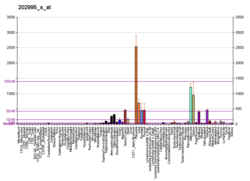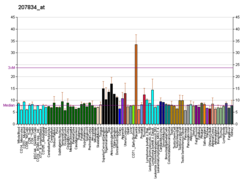Top Qs
Timeline
Chat
Perspective
FBLN1
Protein-coding gene in the species Homo sapiens From Wikipedia, the free encyclopedia
Remove ads
FBLN1 is the gene encoding fibulin-1, an extracellular matrix and plasma protein.[5][6][7]
Remove ads
Function
Fibulin-1 is a secreted glycoprotein that is found in association with extracellular matrix structures including fibronectin-containing fibers, elastin-containing fibers and basement membranes. Fibulin-1 binds to a number of extracellular matrix constituents including fibronectin,[7] nidogen-1, and the proteoglycan, versican.[7][8] Fibulin-1 is also a blood protein capable of binding to fibrinogen.[9]
Remove ads
Structure
Fibulin-1 has modular domain structure and includes a series of nine epidermal growth factor-like modules followed by a fibulin-type module, a module found in all members of the fibulin gene family.[6]
The human fibulin-1 gene, FBLN1, encodes four splice variants designated fibulin-1A, B, C and D, which differ in their carboxy terminal regions. In mouse, chicken and the nematode, C. elegans, only two fibulin-1 variants are produced, fibulin-1C and fibulin-1D.[5]
Remove ads
Interactions
FBLN1 has been shown to interact with:
See also
References
Further reading
Wikiwand - on
Seamless Wikipedia browsing. On steroids.
Remove ads







